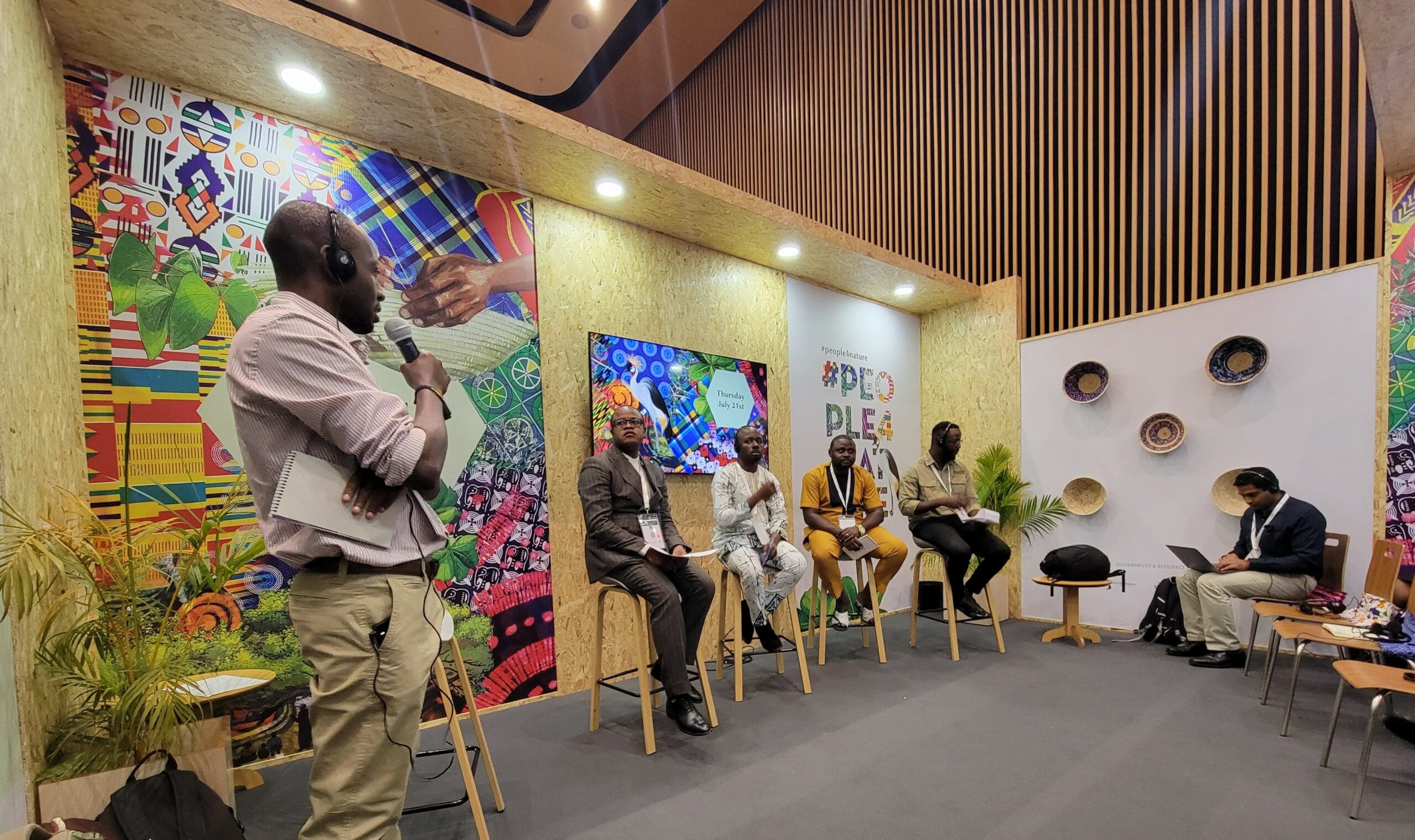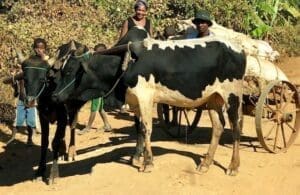It is my honor to be with you today at this gathering of some of Africa’s brightest minds who have come together to rethink existing conservation paradigms to save our planet from the devastating threat of biodiversity loss. We are here to answer one vital question:
Why must we support and empower Indigenous Peoples and local communities, including the women and youth within these communities, to achieve regional and global biodiversity conservation goals?
For centuries, governments have tried and tested traditional protected and conserved area approaches to conservation divorcing people from nature. This approach is not working. The diversity of species and ecosystems on Earth is declining at the fastest rate than at any other time in human history—up to one million species are currently threatened with extinction.
For years we have heard global conservation experts tell governments in the global South, particularly Africa, to expand protected areas and increase the percentage of their national territories set aside for wildlife and biodiversity conservation. These calls have multiplied recently with the goal of bringing at least 30%—and up to 50%—of the planet’s terrestrial and marine areas under formal protection by 2030. This is now commonly referred to as the 30×30 plan.
We must recognize that this practice of setting aside large tracts of land for strict conservation took hold during the colonial period and is responsible for establishing some of the continent’s most emblematic conservation areas: Etosha (1907), Virunga (1925), Kruger (1926), Hwange (1928), Serengeti (1958), and Ngorongoro (1959).
But what does this setting aside of land for protection, whether by governments or conservation agencies, mean? What are we protecting them from, and is it going to solve the biodiversity crisis of our time?
A common thread that connects these spaces is chronic patterns of abuse and human rights violations exemplified by the displacement of communities, the loss of land, and the subsequent criminalization of community livelihoods.
The evictions of the Indigenous Maasai from sections of northern Tanzania in Ngorongoro National Park to create room for conservation and trophy hunting is a real-time example of the excesses of conservation in Africa. As we speak, the Benet of Mt. Elgon in Uganda are being evicted from their traditional lands. The wildlife authorities have shot community members, destroyed their homes, and confiscated their livestock.
Human rights violations and forced evictions in the name of conservation are not a part of history. They are happening right now.
Indeed, it is estimated that up to 136 million people were displaced when formerly protecting half of the Earth’s currently protected area (8.5 million km2). As RRI research shows, the biggest threats to “protected lands” often come from commercial scale farming, extractive industries, emissions from industrial projects, and even at times from the actors charged with protecting them.
The establishment of protected areas in Africa has not occurred in isolation, but rather has been heavily influenced by global processes. In 1982, the World Parks Congress in Bali, Indonesia called for the expansion of a protected areas network to cover at least 10% of the Earth’s land area, a goal that gave primacy to the role of governments in determining, establishing, and managing national conservation agendas. Similar commitments were made at the 1992 Rio Summit with the signing of the Convention on Biological Diversity (CBD) and the subsequent adoption of the 2010 Aichi Biodiversity Targets.
Grounded in the convention that governments are the best custodians of the commons, the global network of protected areas increased by 80% between 1970 and 1985, with two-thirds of this growth occurring in developing countries. Despite this, the Aichi Biodiversity Targets, set 22 years ago this year, have not been met. None of the CBD targets set in 1982, 1992, 2010 or 2020 have been met.

What can new ways of implementing conservation efforts bring to the table for the proposed 30×30 goal?
It is time that African policymakers, Western governments, and global conservation funders recognize that the answer to the global biodiversity crisis is not in emptying the forests of their traditional guardians—it is in recognizing their rights and leadership in protecting those forests, and in investing in their conservation efforts. Over five decades of research shows that legally recognized community lands store more carbon, create far lower emissions and deforestation, and support the livelihood needs of more people than lands administered by governments or private entities.
Indigenous Peoples and local communities lay claim to nearly 50% the world’s lands, but their ownership rights are recognized on just 10% of this area despite the fact that most of the planet’s remaining biodiversity exists in their lands and territories.
RRI research shows that rights-based conservation is a viable and cost-effective solution for achieving the 30×30 goal. In fact, the report found that it is far more expensive to relocate local peoples than it is to empower them with rights and tools to conserve their lands.
Despite challenges related to poverty and structural injustices, Indigenous Peoples and local communities make investments of between US$2 to 4 billion per year while simultaneously managing and protecting biodiversity more efficiently and at a lower cost than any other government or private sector entity. They do this without proper support, recognition, or funding, making secure tenure rights for Indigenous Peoples and local communities a just and viable alternative to exclusionary conservation practices.
Here are five recommendations for governments and policymakers at APAC:
-
- Promote the legal recognition and protection of the land and forest rights of Indigenous Peoples and local communities, including the women and youth within these communities.
- Strengthen and promote rights-based approaches and conservation models in Africa.
- Establish an independent, transparent, Africa-wide conservation monitoring and grievance mechanism to strengthen accountability of conservation efforts, redress infringements of human rights, and enforce compliance.
- Support efforts by community youth and women to advance their land and livelihood rights in important biodiversity conservation areas.
- Channel more conservation finance directly to Indigenous Peoples and local communities, including the women and youth within these communities.
To conclude, I ask: Is it tenable to continue with the business-as-usual model of conservation in Africa? Are there alternative models that can and should be considered to achieve biodiversity and conservation targets on the continent?
The answer is yes. We must leverage the cultural diversity of Africa to craft new conservation models that put people at the center alongside nature. Indigenous Peoples and local communities are key allies in the fight to protect our planet and it’s about time we let them lead the way. Lands have people and people have rights. We must protect both.






